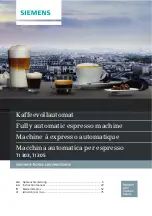
UTILITY STITCHES
———————————————————————————————————————————————————————
76
0
Close the zipper, turn over the fabric, and
then baste the other side of the zipper to the
fabric.
1
Basting stitching
a
Attach the presser foot holder to the other pin
of zipper foot “I”.
If the presser foot holder was attached to the
right pin in step
6
, change it to the left pin.
1
Pin on the left side
2
Needle drop point
b
Topstitch around the zipper.
Sew reverse stitches at the end of the zipper
opening and align the zipper teeth with the
side of the presser foot.
1
Right side of fabric
2
End of zipper opening
3
Reverse stitches
4
Beginning of stitching
5
Basting stitching
c
When you are about 5 cm (2 inch) from the
end of the zipper, stop the sewing machine
with the needle lowered (in the fabric), and
then raise the presser foot lever.
d
Remove the basting stitching, open the zipper,
and then continue sewing.
1
I
2
1
2
1
3
4
5
S2_brotherE.book Page 76 Thursday, February 13, 2003 11:03 AM
















































